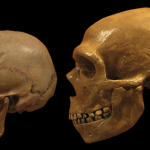Tiny traces of DNA found in cave dust may unlock secret life of Neanderthals0
- Ancient Archeology, From Around the Web
- May 18, 2021
Advanced technique used to recover genetic material may help solve the mystery of early humans

Advanced technique used to recover genetic material may help solve the mystery of early humans

For tens of thousands of years, a Neanderthal molar rested in a shallow grave on the floor of the Stajnia Cave in what is now Poland. For all that time, viable mitochondrial DNA remained locked inside – and now, finally, scientists are discovering its secrets.

We now know that many of us are part Neanderthal, with our genes carrying traces of past encounters between our early ancestors and the Stone Age homininsthat populated Europe until around 40,000 years ago.

A pair of researchers at Temple University has found evidence that suggests Neanderthals mated and produced offspring with anatomically modern humans multiple times—not just once, as has been suggested by prior research.